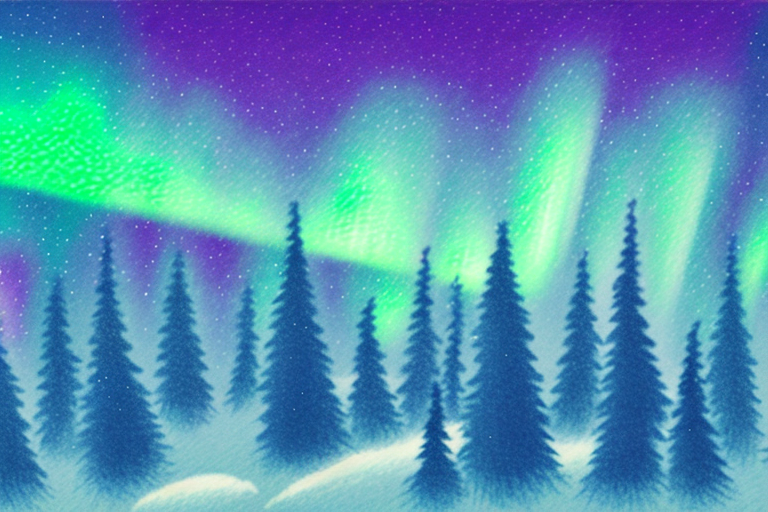Have you ever been captivated by the ethereal beauty of the Northern Lights? The mesmerizing dance of colors across the night sky is a sight that enchants photographers and travelers alike. To capture the magic of this natural phenomenon, having the right camera is essential. In this article, we will explore the best cameras for capturing the Northern Lights and delve into the factors you should consider when choosing one.
Understanding the Northern Lights Phenomenon
The Northern Lights, also known as the Aurora Borealis, are caused by charged particles from the sun colliding with atoms in the Earth’s atmosphere. This collision produces stunning displays of light in a variety of colors, including shades of green, blue, purple, and even red. Understanding the science behind this phenomenon can help you appreciate the importance of choosing a camera that can effectively capture these colors and details.
When photographing the Northern Lights, it’s important to have a camera with excellent low-light capabilities. The dark sky illuminated by the faint glow of the aurora requires a camera that can capture sharp images without excessive noise or graininess. Additionally, since the lights are constantly moving, a camera with a fast autofocus system will ensure you don’t miss any fleeting moments.
Furthermore, it is essential to consider the lens choice when photographing the Northern Lights. A wide-angle lens is often preferred to capture the expansive nature of the aurora and include the surrounding landscape. This type of lens allows you to capture more of the sky and create a sense of scale in your photographs. Additionally, using a lens with a wide aperture, such as f/2.8 or wider, will enable you to gather more light and enhance the vibrancy of the colors in the Northern Lights.
Capturing the Magic: Why Choosing the Right Camera Matters
Choosing the right camera for Northern Lights photography is crucial because it can significantly impact the quality and clarity of your images. The correct camera will enable you to capture the vibrant colors and intricate details, allowing you to relive the awe-inspiring experience of witnessing the Northern Lights.
One important consideration when selecting a camera is the size of its image sensor. Cameras with larger sensors tend to perform better in low-light conditions, as they can capture more light and produce cleaner images with less noise. This is crucial when photographing the faint, delicate hues of the Aurora Borealis.
Another key factor to consider is the camera’s ISO performance. ISO determines the camera’s sensitivity to light, and a high ISO setting is often necessary when shooting in the dark. Look for a camera with excellent high ISO capabilities to ensure that your images remain sharp and noise-free even at higher sensitivity settings.
Additionally, it is important to consider the camera’s lens capabilities when choosing a camera for Northern Lights photography. A wide-angle lens with a low aperture (such as f/2.8 or lower) is ideal for capturing the expansive beauty of the night sky and the Northern Lights. This type of lens allows more light to enter the camera, resulting in brighter and more detailed images.
Factors to Consider When Choosing a Camera for the Northern Lights
When selecting a camera for Northern Lights photography, there are several factors that should be taken into account. Firstly, consider the camera’s low-light performance. Look for a camera that excels in high ISO settings and produces minimal noise, as this will ensure your images are crisp and vibrant.
Another important consideration is the camera’s autofocus system. The Northern Lights are constantly in motion, and a fast and accurate autofocus will help you capture those breathtaking moments without any blurriness. Look for a camera with advanced autofocus features that can keep up with the dance of the lights.
Additionally, it’s essential to evaluate the camera’s image stabilization capabilities. Shooting in low light often requires longer exposure times, and any camera movement during the exposure can result in blurry images. Look for a camera with built-in image stabilization or consider using a tripod to ensure sharp, steady shots.
Lastly, consider the camera’s overall build quality and weather resistance. Chasing the Northern Lights often means venturing into cold and harsh environments. A camera that can withstand extreme temperatures and adverse weather conditions will provide peace of mind and ensure durability throughout your photographic endeavors.
Now that we’ve covered the important factors to consider when selecting a camera for the Northern Lights, let’s explore the different camera types and their suitability for aurora photography.
One additional factor to consider when choosing a camera for the Northern Lights is the camera’s sensor size. A larger sensor can capture more light, resulting in better image quality and reduced noise in low-light conditions. Full-frame cameras, with their larger sensors, are often preferred by professional photographers for capturing the beauty of the aurora borealis.
Furthermore, the camera’s burst mode capability can be crucial for capturing the fast-moving and ever-changing patterns of the Northern Lights. Look for a camera that offers a high burst rate, allowing you to take multiple shots in quick succession. This will increase your chances of capturing that perfect moment when the lights are at their most vibrant and dynamic.









